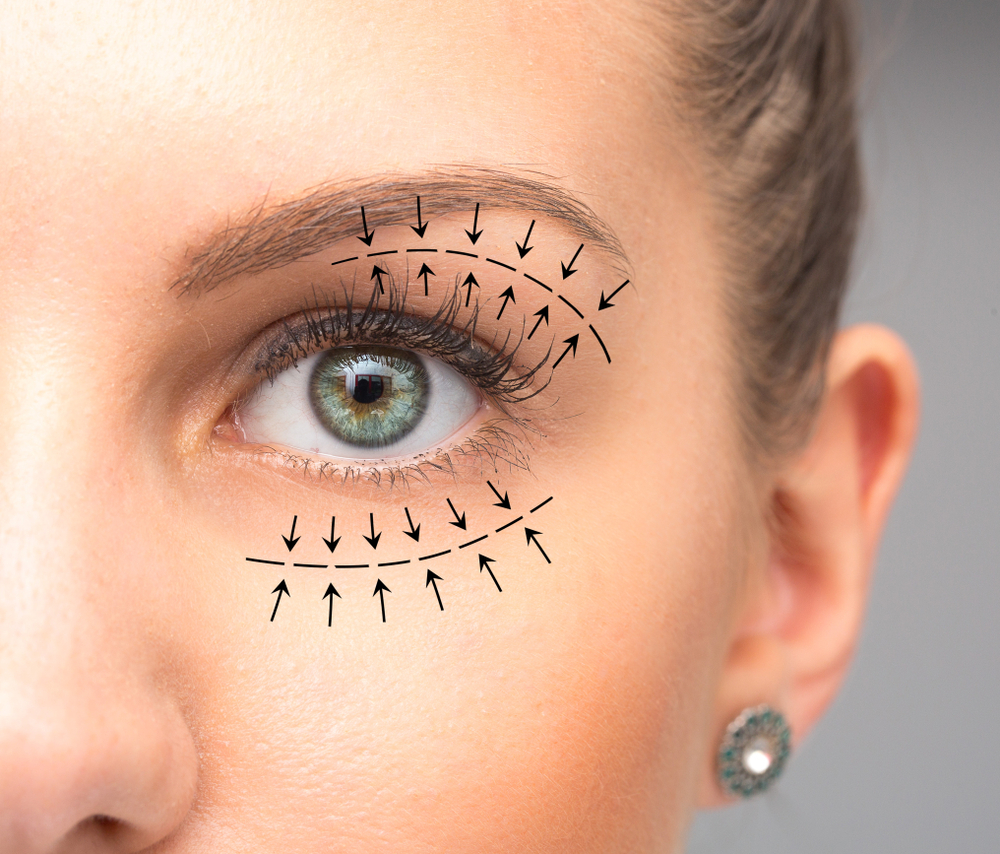
Blepharoplasty is one of the most common procedures performed to help improve a person’s appearance and field of vision. When done correctly, this cosmetic procedure can have great results for individuals who wish to enhance their overall look by creating a more rested and youthful-looking eye.
To ensure that you qualify for eyelid surgery and get the best results possible from your blepharoplasty procedure, it is vital to understand all the factors involved in determining if you are an ideal candidate. In this blog post, we will explore precisely what factors into being cleared by your surgeon for eyelid surgery and how to prepare yourself ahead of time should you decide to pursue it.
What Is Blepharoplasty?
Blepharoplasty, commonly called eyelid surgery, is a cosmetic surgical procedure that removes excess skin, tissue, or fat from the upper or lower eyelids to improve the appearance of the eyes. In addition to enhancing the aesthetics of the eyes, blepharoplasty can also resolve functional issues such as obstruction of vision caused by sagging skin around the eyes. The procedure typically involves making incisions along the eyelids’ natural creases to minimize scarring, and the recovery time can vary depending on the extent of the surgery.
How Do You Qualify for Blepharoplasty?
To qualify for blepharoplasty, also known as an eye lift, you should first consult a board-certified plastic surgeon who will evaluate your medical history and examine your eyes to determine if you are a good candidate. Here are some factors that may be considered when determining if you qualify for blepharoplasty:
- Age: Candidates for blepharoplasty are typically over 35, although younger patients may be considered if they have hereditary bags under their eyes.
- Overall health: Good health is essential for any surgical procedure. Candidates should be in good overall health, free of serious medical conditions that could pose a risk during surgery.
- Eye conditions: Candidates with certain eye conditions such as dry eye, glaucoma, or detached retina may not be good candidates for blepharoplasty. We will evaluate your eye health and any pre-existing conditions you may have.
- Expectations: Having realistic expectations for the procedure’s outcome is essential. Candidates should understand what the procedure can and cannot achieve and clearly understand the recovery process.
- Lifestyle habits: Smoking and alcohol use can affect the healing process, so candidates should be willing to quit smoking and limit their alcohol consumption in the weeks before and after surgery.
The best way to determine if you qualify for blepharoplasty is to consult us. We can evaluate your needs and goals and help you make an informed decision about the procedure.
What Are the Benefits of Blepharoplasty?
Blepharoplasty, also known as eyelid surgery, offers a range of benefits for individuals looking to improve their eyes’ appearance. Some of the key benefits of blepharoplasty include:
Improved Appearance
Blepharoplasty can help to reduce sagging skin, wrinkles, and bags around the eyes, making the eyes look more youthful and refreshed.
Long-Lasting Results
The results of blepharoplasty are typically long-lasting, with many individuals experiencing improved eye appearance for years after the procedure.
Minimal Scarring
Incisions during blepharoplasty are typically small and well-concealed, resulting in minimal scarring.
What Happens During the Procedure?
When considering eyelid surgery, it’s essential to understand the procedure and what to expect. During your consultation, we will evaluate your unique situation and determine the best surgical technique to enhance the appearance of your eyelids.
This may involve removing excess fat and skin from your upper eyelids and possibly repositioning the muscles around your eyes. Fine sutures placed along natural folds in the eyelids will minimize scarring. While the specifics of the procedure may vary, our goal is to provide you with natural-looking results that help you feel confident and refreshed.
In lower eyelid surgery, make an incision along the lashline and smile creases of the lower lid, which is inconspicuous and has minimal scarring. Excess fat, muscle, and skin are trimmed during the operation, and the incision is secured with fine sutures. In cases where the primary cause of puffiness is excess fat, surgeons may use a transconjunctival blepharoplasty, which requires no visible incision. The excess fatty material is removed through an incision inside the lower eyelid.
The procedure may be completed under local or general anesthesia and typically takes one to three hours to complete, depending on the extent of the surgery. During the procedure, incisions are made in the eyelids to remove the excess tissue, and the incisions are closed with sutures.
After undergoing eyelid surgery, it is common for patients to experience tightness and soreness as the anesthesia wears off. However, these discomforts can be relieved using prescribed pain medication. In terms of recovery time, most individuals feel comfortable enough to resume their regular schedules within one to two weeks.
It is worth noting that post-surgical bruising also varies from one person to another. While the bruising may peak during the first week after the procedure, it could take anywhere from two weeks to a month for it to subside entirely. Rest assured, however, that these effects are temporary and the surgery’s outcome can significantly improve the appearance and function of the eyes.
Refresh Your Appearance With a Blepharoplasty in Beverly Hills, CA
Kadz Plastic Surgery in Beverly Hills, CA, offers blepharoplasty, a cosmetic surgery that can help rejuvenate and refresh the area around the eyes. Whether you want to remove excess skin, reduce puffiness, or lift droopy eyelids, we can help you achieve your desired results. We understand that everyone’s needs are unique, so we provide personalized consultations to determine the best approach for your needs. Contact us today to schedule a consultation and take the first step towards a more youthful and vibrant appearance.
